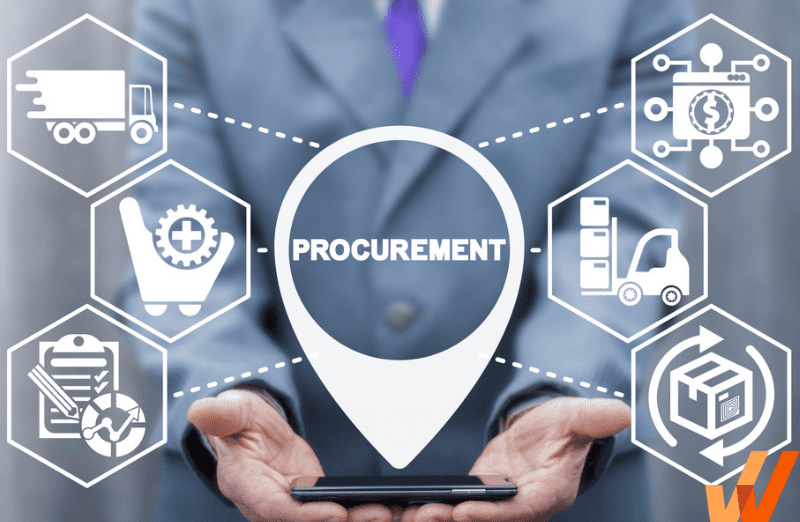In today’s fast-paced business landscape, procurement and supply chain management are undergoing a remarkable transformation. From embracing cutting-edge technologies to prioritizing sustainability and fostering collaborative partnerships, businesses are redefining their approach to procurement.
Let’s delve into the key trends shaping the future of procurement and supply chain, and how organizations can adapt to thrive in this evolving environment.
Digital Transformation:
- Automation: Artificial Intelligence (AI) is revolutionizing procurement by automating routine tasks, enhancing forecasting accuracy, and driving down costs.
- Transparency and Security: Blockchain technology is revolutionizing supply chain transparency and security, ensuring trust and integrity across the entire procurement process.
Sustainability:
Ethical Sourcing: Businesses are increasingly prioritizing ethical sourcing practices, ensuring fair treatment of workers and ethical production methods.
Environmental Responsibility: Sustainability is becoming a core focus, with businesses implementing environmentally friendly practices to minimize their carbon footprint and promote ecological stewardship.
Collaborative Partnerships:
- Real-Time Communication: Platforms and marketplaces are facilitating seamless communication and information sharing among stakeholders, improving efficiency and reducing lead times.
- Information Sharing: Enhanced collaboration among partners leads to better decision-making, risk mitigation, and improved supply chain resilience.
E-commerce and Omni-channel Retailing:
The granular data obtained through RTILV offers invaluable insights into various aspects of the supply chain:
- Location-Specific Demands: By analyzing item movements across different locations, businesses can identify specific regional demands and tailor their strategies accordingly, ensuring targeted marketing and inventory management.
- Seasonal Trends: RTILV facilitates the detection of seasonal fluctuations in demand, allowing companies to adjust their production schedules, marketing campaigns, and inventory levels to capitalize on seasonal peaks and mitigate slowdowns.
Globalization and Supply Chain Localization
- Risk Mitigation: Companies are diversifying their supply chains and balancing global reach with localized production to mitigate risks associated with geopolitical instability and disruptions.
- Resilience: Localized production facilities enhance supply chain resilience and agility, enabling companies to respond swiftly to market changes and disruptions.
Supplier Relationship Management (SRM) Platforms:
- Centralized Platforms: SRM platforms are centralizing communication, contract management, and performance monitoring, fostering stronger relationships with suppliers.
- Efficiency: Streamlined processes and enhanced visibility into supplier performance drive operational efficiency and cost savings.
Conclusion
As the procurement and supply chain landscape continues to evolve, organizations must embrace innovation and adapt to emerging trends to remain competitive. By leveraging technologies like AI and blockchain, prioritizing sustainability, fostering collaborative partnerships, and optimizing supply chain processes, businesses can unlock new opportunities for value creation, resilience, and long-term growth in the dynamic marketplace of the future.
Digital transformation in procurement and supply chain management involves leveraging technologies like AI and blockchain to automate tasks, enhance efficiency, and ensure transparency and security throughout the process.
Sustainability is increasingly important in procurement, with businesses prioritizing environmentally responsible practices and ethical sourcing to minimize their ecological footprint and promote social responsibility.
Collaborative partnerships involve real-time communication and information sharing among stakeholders to improve efficiency, reduce lead times, and enhance decision-making in the supply chain.
E-commerce is driving innovation in procurement and supply chain management by enabling faster deliveries through automation and investment in last-mile delivery solutions.
Globalization allows companies to access a broader market but also introduces risks. To mitigate these risks, companies are balancing global reach with localized production to enhance supply chain resilience and agility.
SRM platforms centralize communication, contract management, and performance monitoring, facilitating stronger relationships with suppliers and driving operational efficiency.
Businesses can transition from cost reduction to value creation in procurement by focusing on innovation, risk mitigation, and long-term growth opportunities, rather than solely on cutting costs.
Continuous category innovation, high customer focus, partner excellence, and sustainability integration are key principles that contribute to successful procurement practices.
AI automates tasks, improves forecasting accuracy, and reduces costs, while blockchain enhances transparency and security, ensuring trust and integrity throughout the procurement process.
Key challenges include adapting to rapidly evolving technologies, navigating geopolitical instability and trade disruptions, and ensuring ethical and sustainable practices throughout the supply chain.

